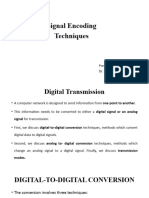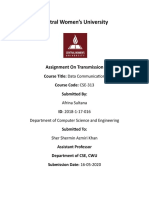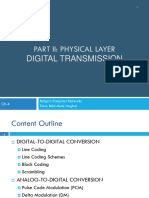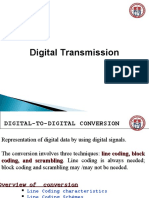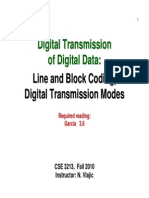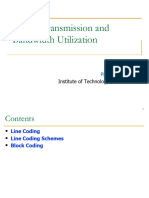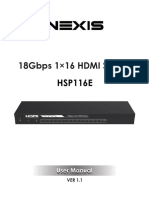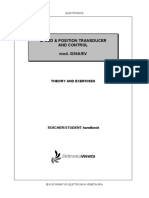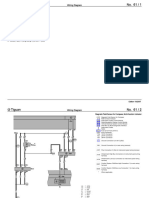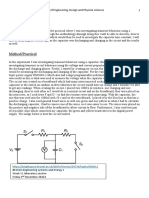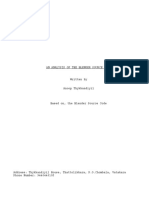0% found this document useful (0 votes)
29 views83 pagesChapter 4
The document discusses digital transmission, focusing on the conversion of digital data to digital signals and the various line coding schemes used. It covers key concepts such as data rate, signal rate, baseline wandering, self-synchronization, and error detection, along with different line coding methods like Unipolar, Polar, and Manchester encoding. Additionally, it highlights the advantages and disadvantages of each coding scheme and the importance of synchronization in digital communication.
Uploaded by
sajeebmahmud3962Copyright
© © All Rights Reserved
We take content rights seriously. If you suspect this is your content, claim it here.
Available Formats
Download as PDF, TXT or read online on Scribd
0% found this document useful (0 votes)
29 views83 pagesChapter 4
The document discusses digital transmission, focusing on the conversion of digital data to digital signals and the various line coding schemes used. It covers key concepts such as data rate, signal rate, baseline wandering, self-synchronization, and error detection, along with different line coding methods like Unipolar, Polar, and Manchester encoding. Additionally, it highlights the advantages and disadvantages of each coding scheme and the importance of synchronization in digital communication.
Uploaded by
sajeebmahmud3962Copyright
© © All Rights Reserved
We take content rights seriously. If you suspect this is your content, claim it here.
Available Formats
Download as PDF, TXT or read online on Scribd
/ 83
